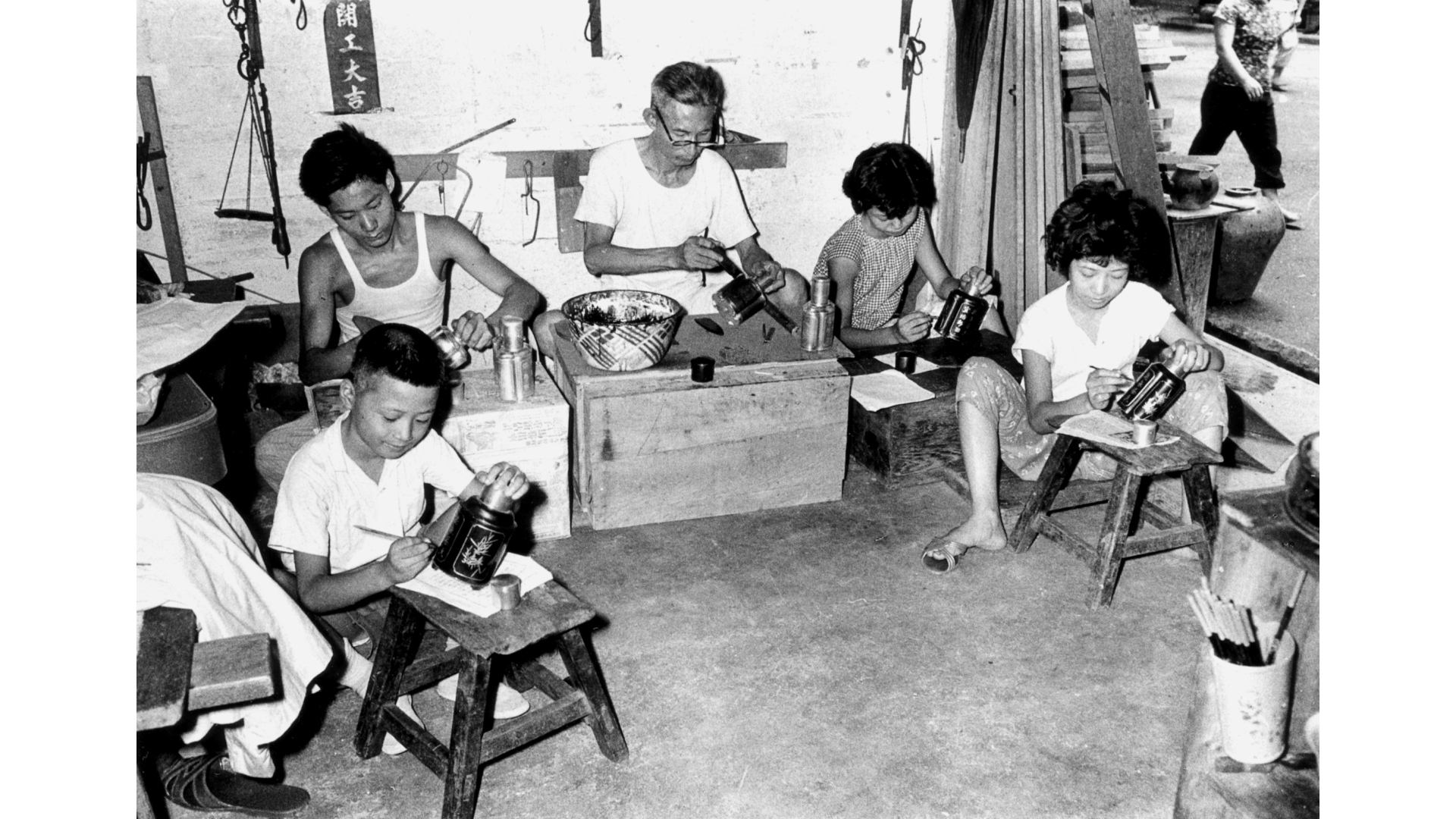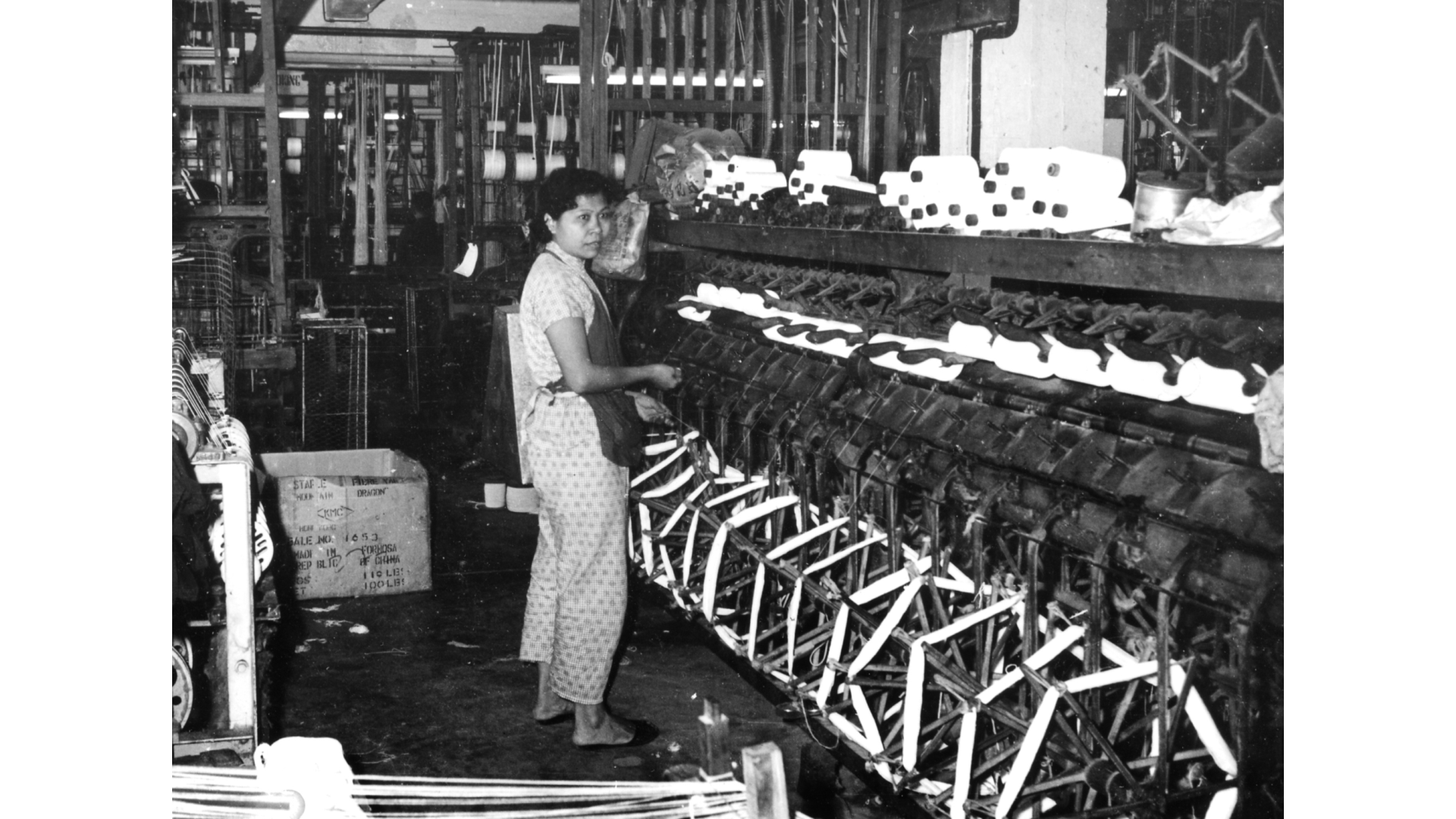1949年,本地⼯廠數⽬僅336家;⾄1960年,已⼤幅躍升⾄近4,800家,升幅超過14 倍!本港⼯業騰⾶,除受惠於內地移民的雄厚資⾦及技術,更有賴⼀群拼命⼯作的勞動階層。60年代重男輕⼥觀念仍然盛⾏,不少⼥孩被逼輟學到⼯廠⼯作 養家,「⼯廠妹」成為當時⼥⽣普遍出路。
為節省⽀出,「⼯廠妹」總是與「飯壺」形影不 離,成為60年代⼀個別具代表性的造型,更出現於不少當代電影中。
The number of factories in Hong Kong boomed by over 1,400% from just 336 in 1949 to nearly 4,800 by 1960. This significant growth in the manufacturing industry was created both by the capital and skill sets of immigrants from the Mainland and by the diligence of local workers. In the ’60s, patriarchy still prevailed. Girls were often forced to drop out of school to earn a living for their families from factory work. “Factory girl” was commonly deemed to be one of the paths to a better future for teenagers at that time.
Almost every “factory girl” carried her meal to work with a food flask to save expense. It was became a distinctive scene of Hong Kong in the ’60s, and was featured in a number of local movies at that time.
除了紡織製⾐,塑膠業與假髮⽣產亦是6、70年代本地⼯業另⼀個表表者。不少塑膠⽇⽤品、玩具及裝飾品也是於⾹港製造,當中「穿膠花」更是不少基層家庭⼀家⼤⼩在家兼職幫補⽣計的機會。80年代初,⾹港製造的玩具⾏銷世界各地。
Apart from textiles and garments, plastics manufacturing and wig production became significant local industries in the 1960s and ’70s. Many plastic household goods, toys and ornaments were made in Hong Kong, including plastic flowers. A lot of families assembled plastic flowers at home to help supplement their income. In the early 1980s, toys made in Hong Kong were sold all over the world.

